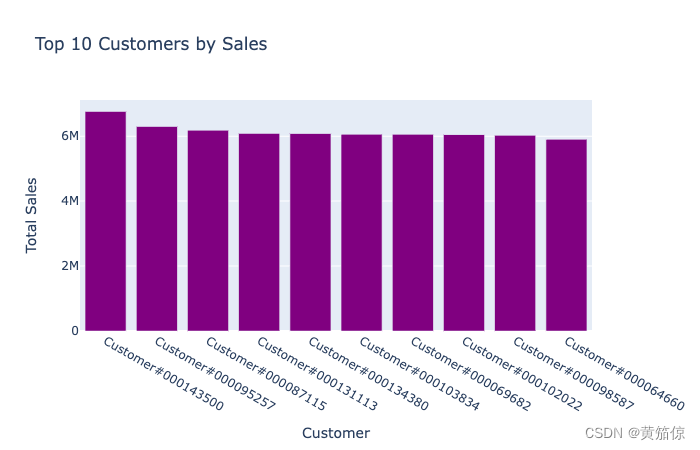github项目地址:vanna-ai/vanna: 🤖 与 SQL 数据库聊天📊。通过 LLMs使用RAG进行准确的TextToSQL的生成工作 🔄 。
Vanna 是 MIT 许可的开源 Python RAG(检索增强生成)框架,用于 SQL 生成和相关功能。
0802.mp4

用户接口
这些是使用 Vanna 构建的一些用户接口。您可以按原样使用这些接口,也可以将其用作自己的自定义接口的起点。
开始
有关所需数据库、LLM 等的详细信息,请参阅文档。
如果您想在训练后了解它的工作原理,可以尝试这款 Colab 笔记本。
安装
pip install vanna
根据您的用例,您可能需要也可能不需要运行这些命令。有关详细信息,请参阅文档。
可以先使用如下代码创建默认的Vanna对象:
import vanna
from vanna.remote import VannaDefault
vn = VannaDefault(model='model_name', api_key='api_key')
vn.connect_to_sqlite('https://vanna.ai/Chinook.sqlite')
vn.ask("What are the top 10 albums by sales?")
导入
如果要自定义 LLM 或向量数据库,请参阅文档。
# The import statement will vary depending on your LLM and vector database. This is an example for OpenAI + ChromaDB
from vanna.openai.openai_chat import OpenAI_Chat
from vanna.chromadb.chromadb_vector import ChromaDB_VectorStore
class MyVanna(ChromaDB_VectorStore, OpenAI_Chat):
def __init__(self, config=None):
ChromaDB_VectorStore.__init__(self, config=config)
OpenAI_Chat.__init__(self, config=config)
vn = MyVanna(config={'api_key': 'sk-...', 'model': 'gpt-4-...'})
# See the documentation for other options
样例
import vanna
from vanna.openai.openai_chat import OpenAI_Chat
from vanna.chromadb.chromadb_vector import ChromaDB_VectorStore
class MyVanna(ChromaDB_VectorStore, OpenAI_Chat):
def __init__(self, config=None):
ChromaDB_VectorStore.__init__(self, config=config)
OpenAI_Chat.__init__(self, config=config)
vn = MyVanna(config={'api_key': 'sk-*************', 'model': 'gpt-3.5-turbo'})
# 训练向量库
vn.train(ddl="""
SELECT customer_name, SUM(sales_amount) as total_sales
FROM sales_wn
GROUP BY customer_name
ORDER BY total_sales DESC
LIMIT 10;
""")
vn.train(sql="SELECT name, age FROM my-table WHERE name = 'John Doe'")
# 询问问题
vn.ask("What are the top 10 customers by sales?")训练
根据您的用例,您可能需要也可能不需要运行这些命令。有关详细信息,请参阅文档。
显示这些陈述是为了让您了解它的工作原理。
使用 DDL 语句进行训练
DDL 语句包含有关数据库中的表名、列、数据类型和关系的信息。
vn.train(ddl="""
CREATE TABLE IF NOT EXISTS my-table (
id INT PRIMARY KEY,
name VARCHAR(100),
age INT
)
""")带文档的训练
有时,您可能希望添加有关业务术语或定义的文档。
vn.train(documentation="Our business defines XYZ as ...")使用 SQL 进行训练
您还可以将 SQL 查询添加到训练数据中。如果您已经有一些查询,这将很有用。您只需从编辑器中复制并粘贴这些内容即可开始生成新的 SQL。
vn.train(sql="SELECT name, age FROM my-table WHERE name = 'John Doe'")提问
vn.ask("What are the top 10 customers by sales?")你会得到 SQL
SELECT c.c_name as customer_name,
sum(l.l_extendedprice * (1 - l.l_discount)) as total_sales
FROM snowflake_sample_data.tpch_sf1.lineitem l join snowflake_sample_data.tpch_sf1.orders o
ON l.l_orderkey = o.o_orderkey join snowflake_sample_data.tpch_sf1.customer c
ON o.o_custkey = c.c_custkey
GROUP BY customer_name
ORDER BY total_sales desc limit 10;如果已连接到数据库,则将获得以下表:
| CUSTOMER_NAME | TOTAL_SALES | |
|---|---|---|
| 0 | Customer#000143500 | 6757566.0218 |
| 1 | Customer#000095257 | 6294115.3340 |
| 2 | Customer#000087115 | 6184649.5176 |
| 3 | Customer#000131113 | 6080943.8305 |
| 4 | Customer#000134380 | 6075141.9635 |
| 5 | Customer#000103834 | 6059770.3232 |
| 6 | Customer#000069682 | 6057779.0348 |
| 7 | Customer#000102022 | 6039653.6335 |
| 8 | Customer#000098587 | 6027021.5855 |
| 9 | Customer#000064660 | 5905659.6159 |
您还将获得一个自动的 Plotly 图表:
